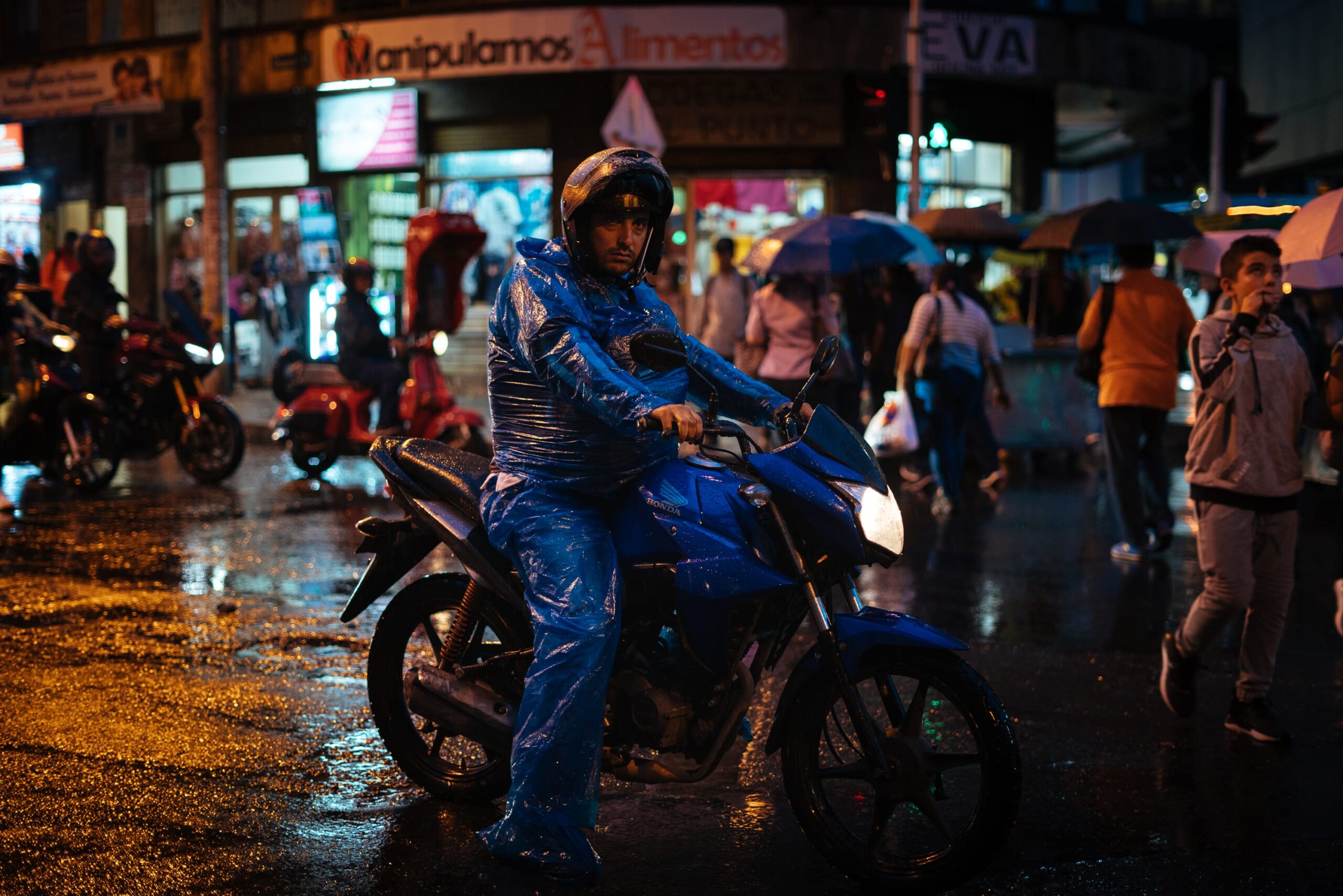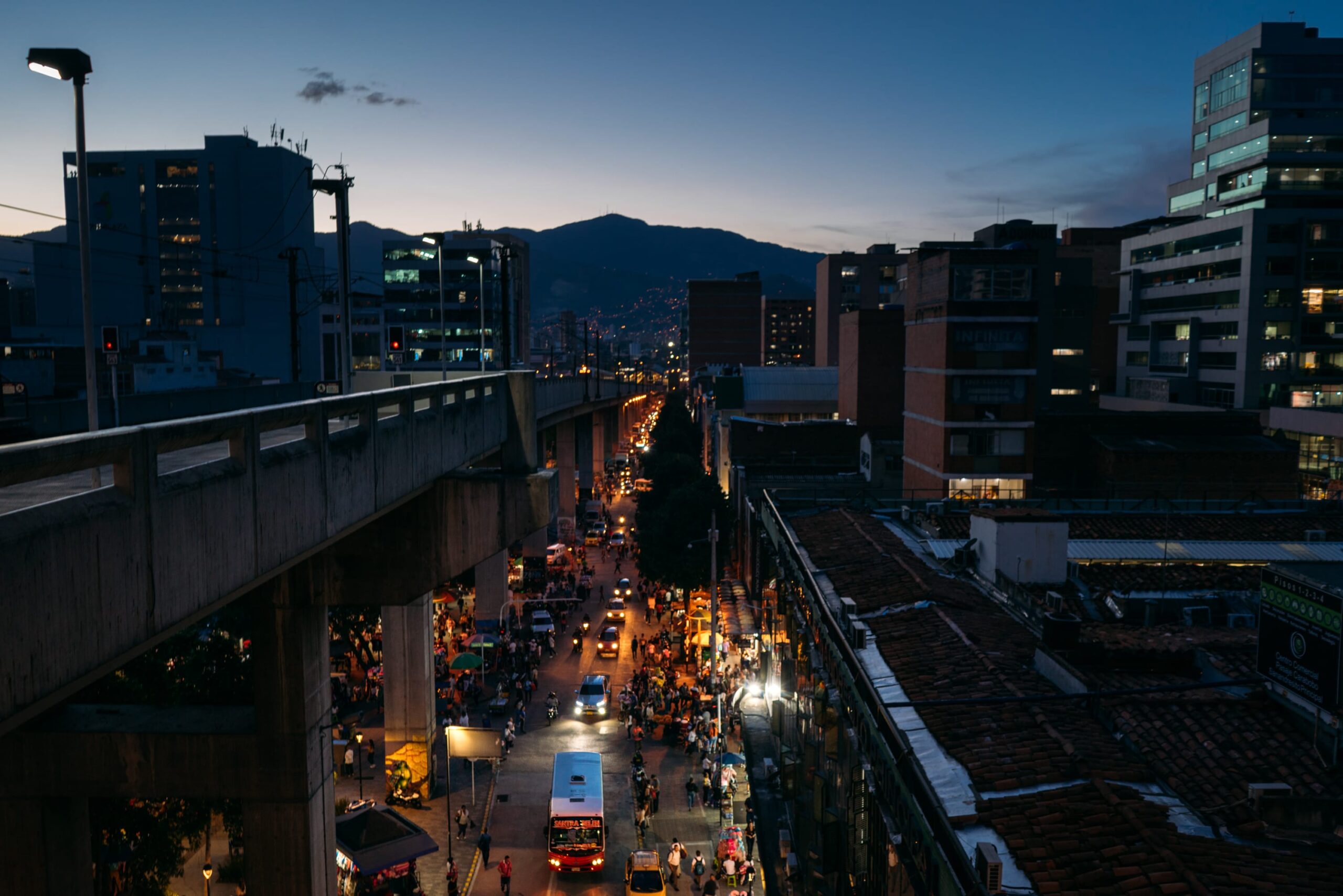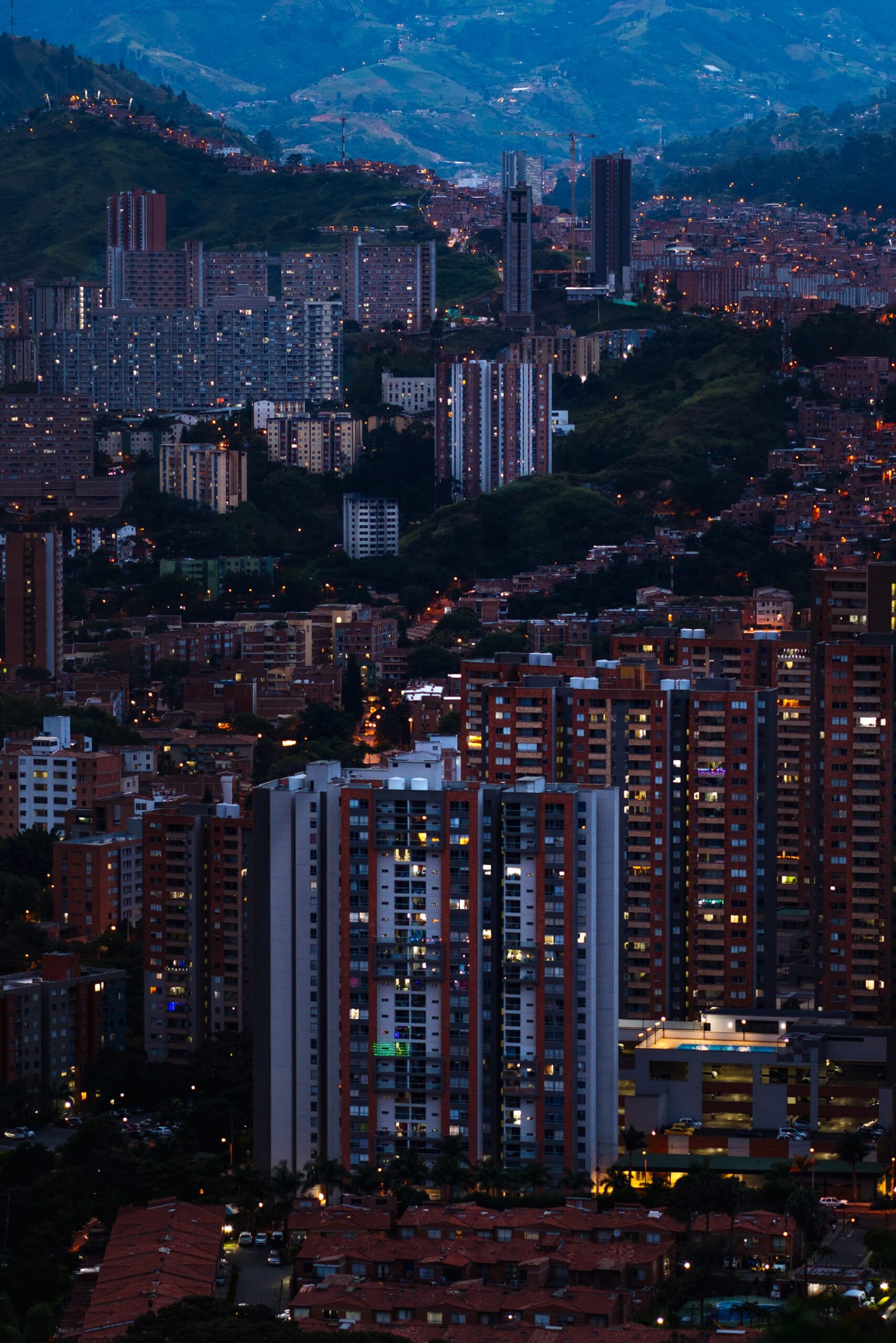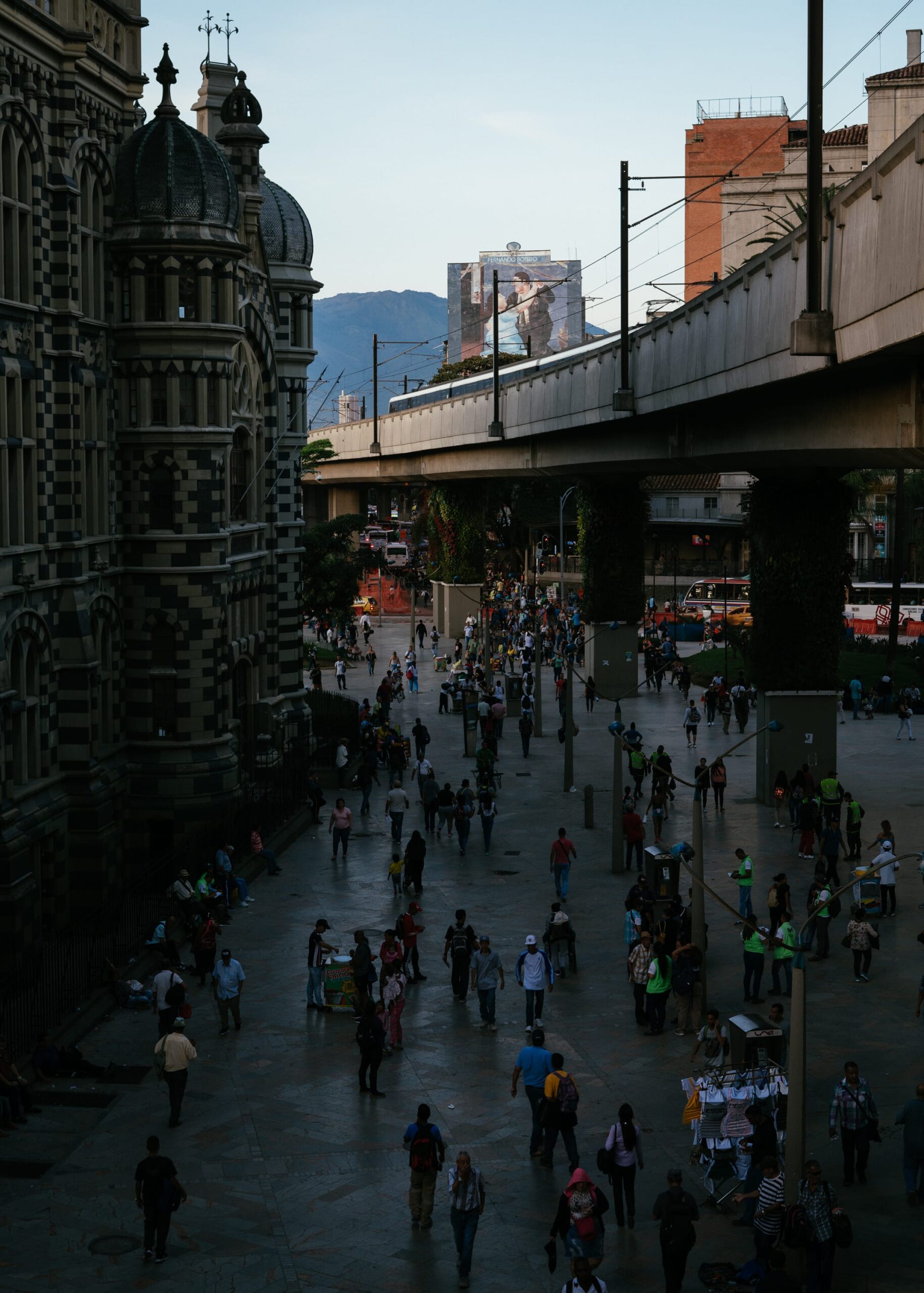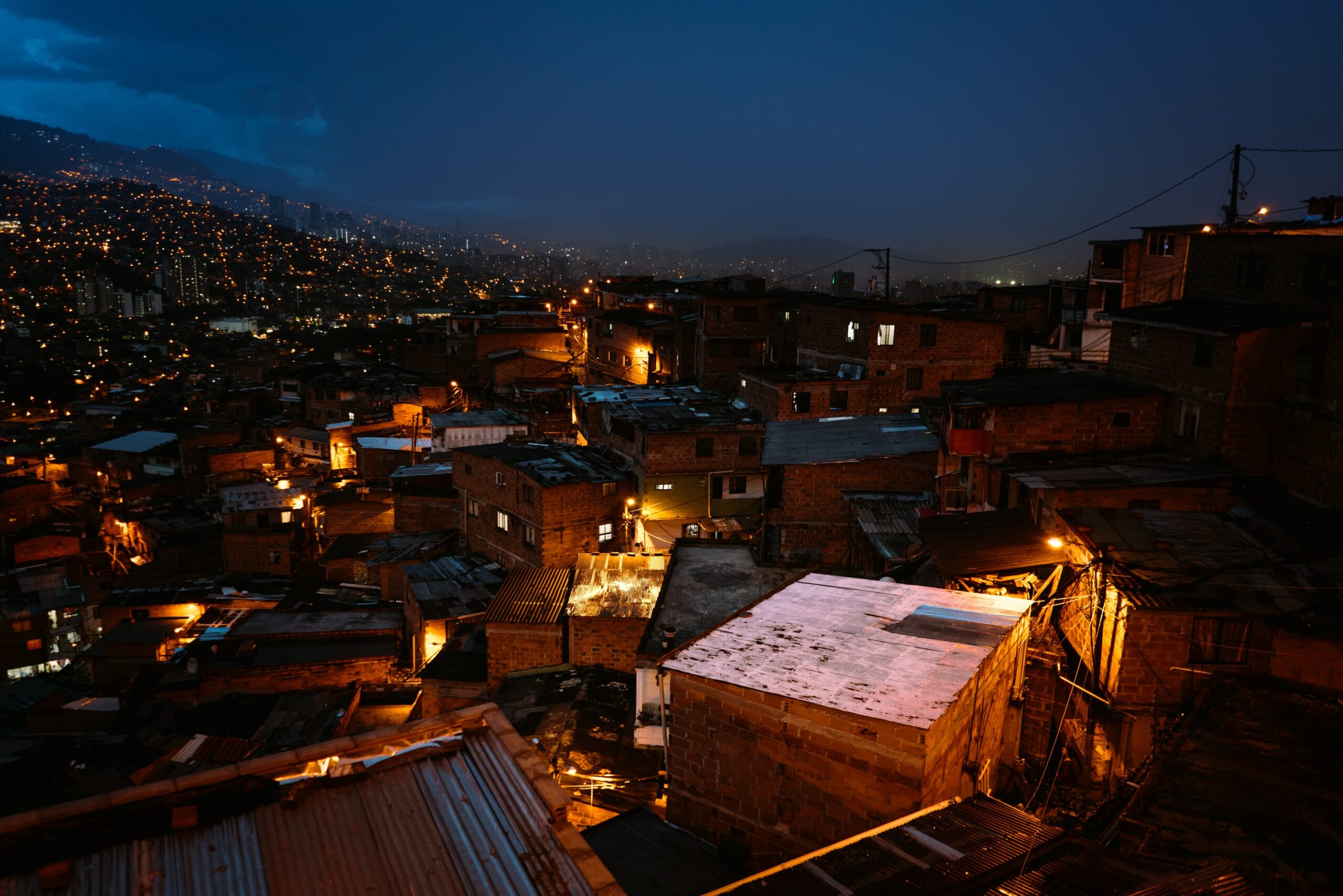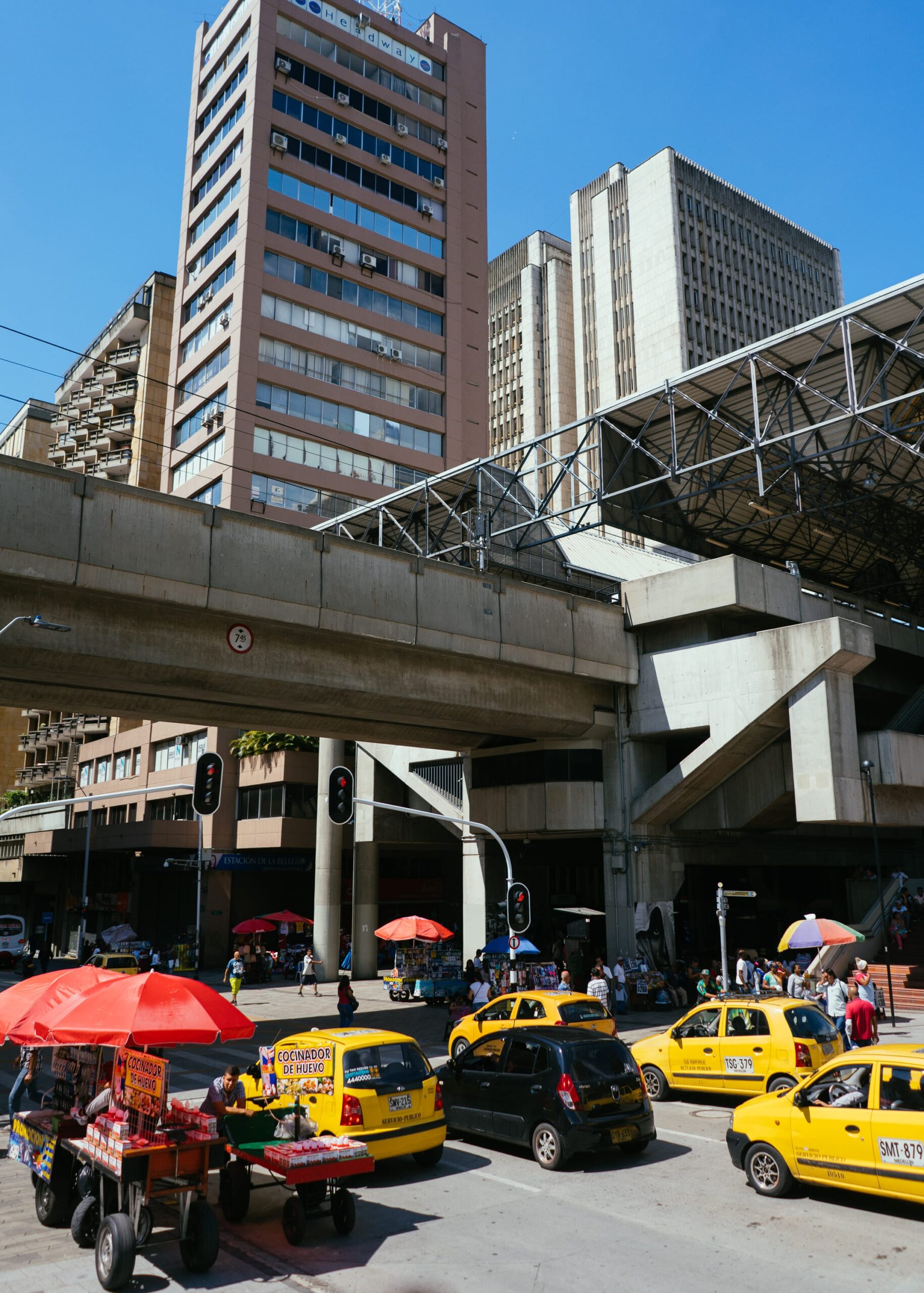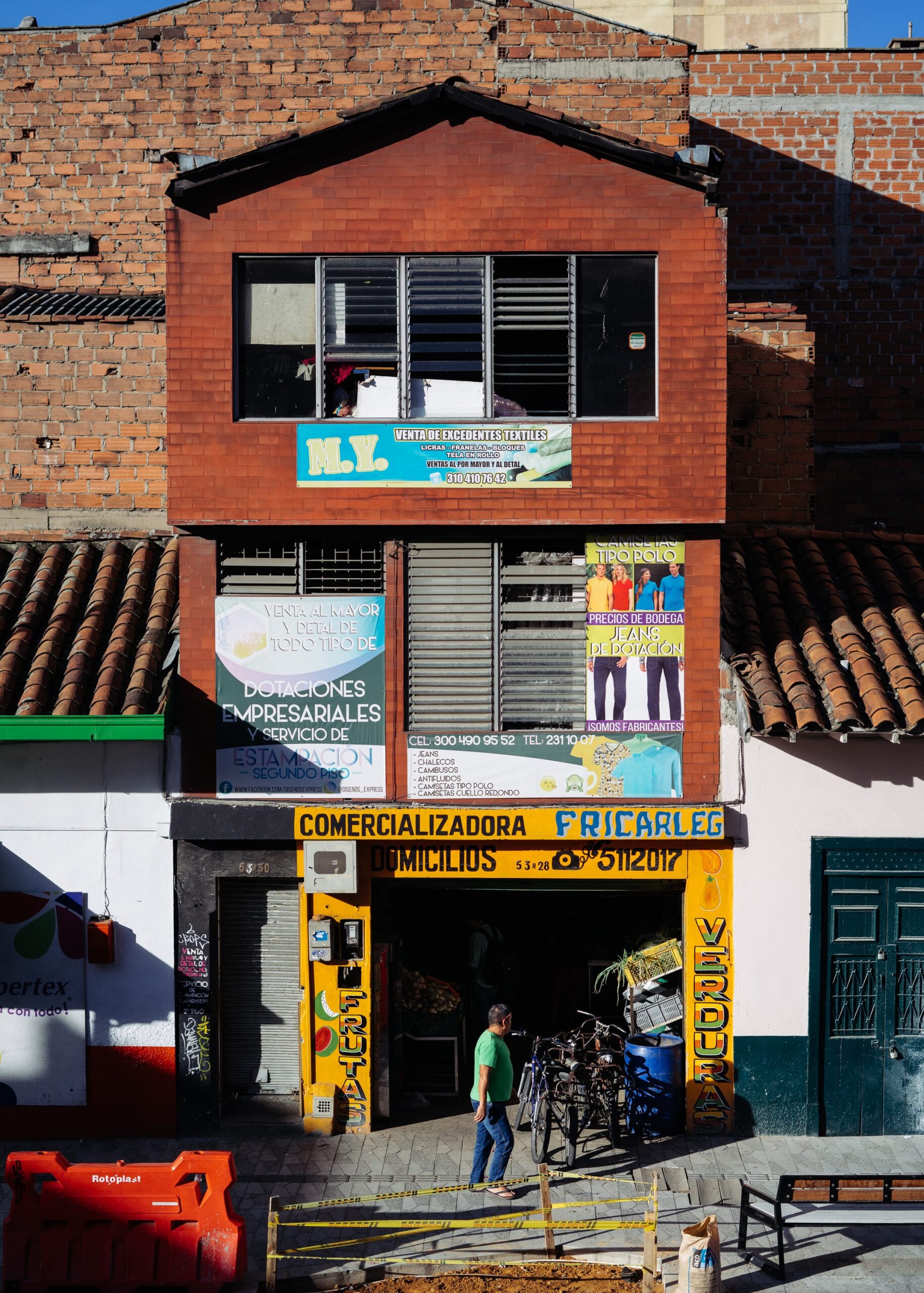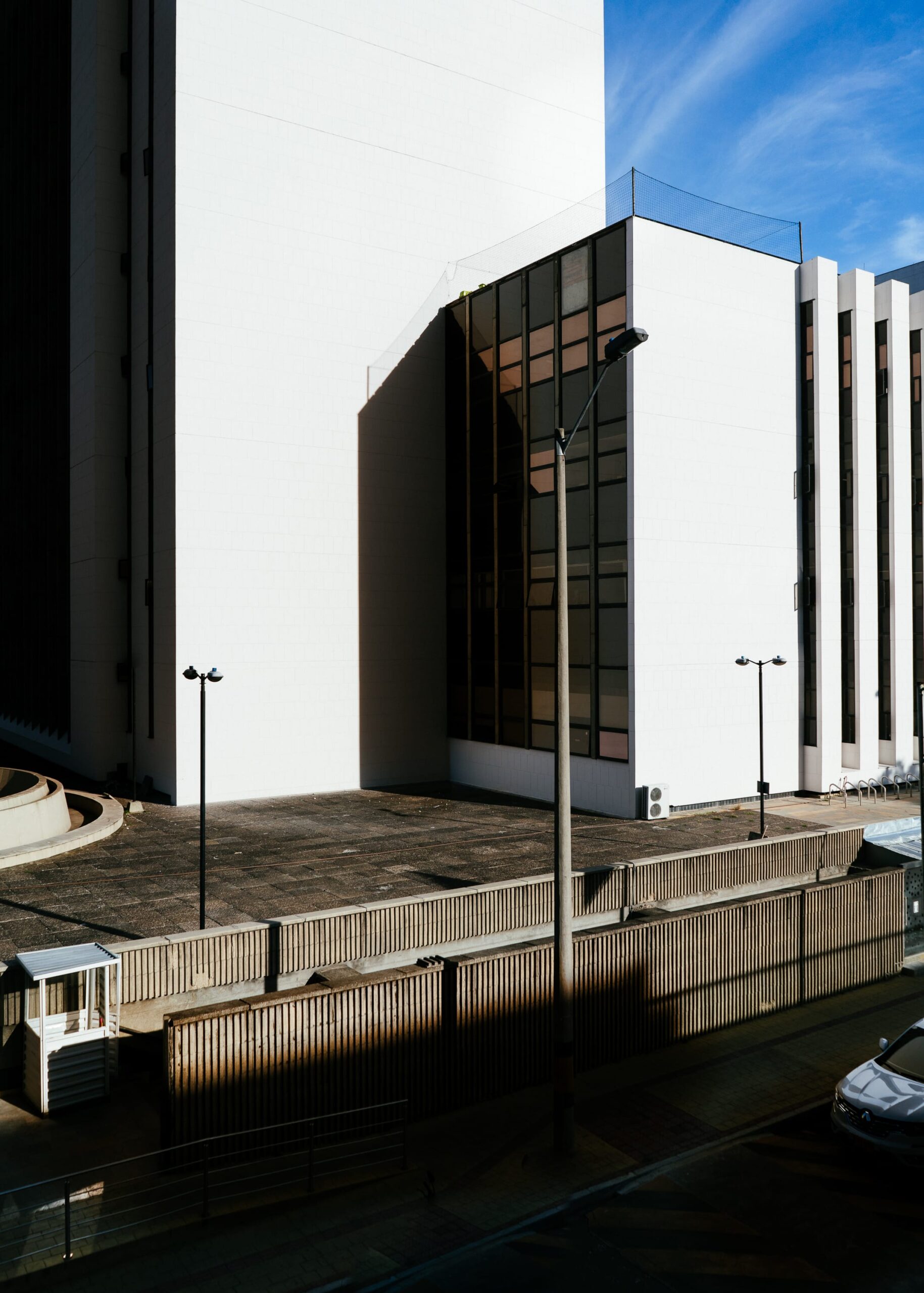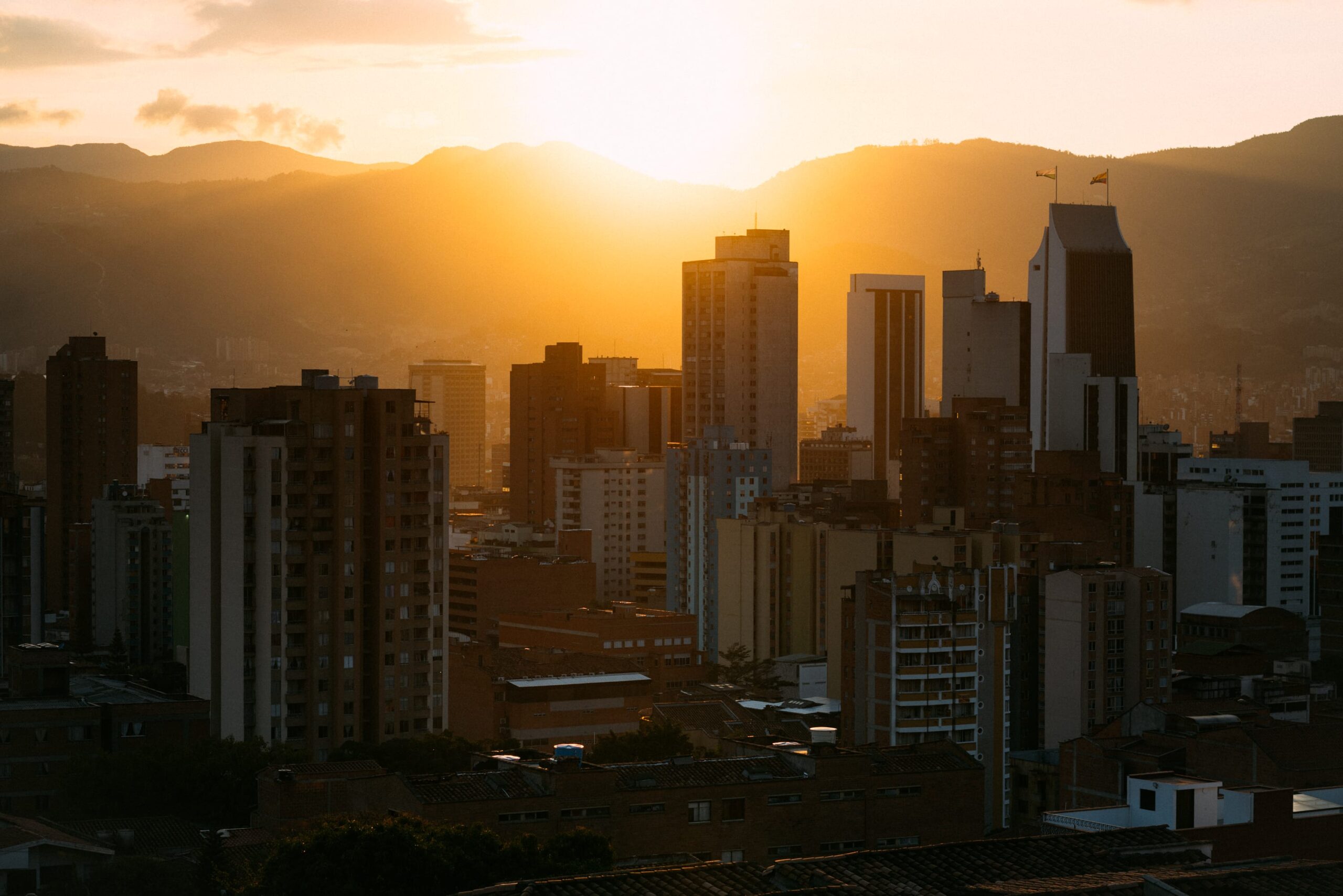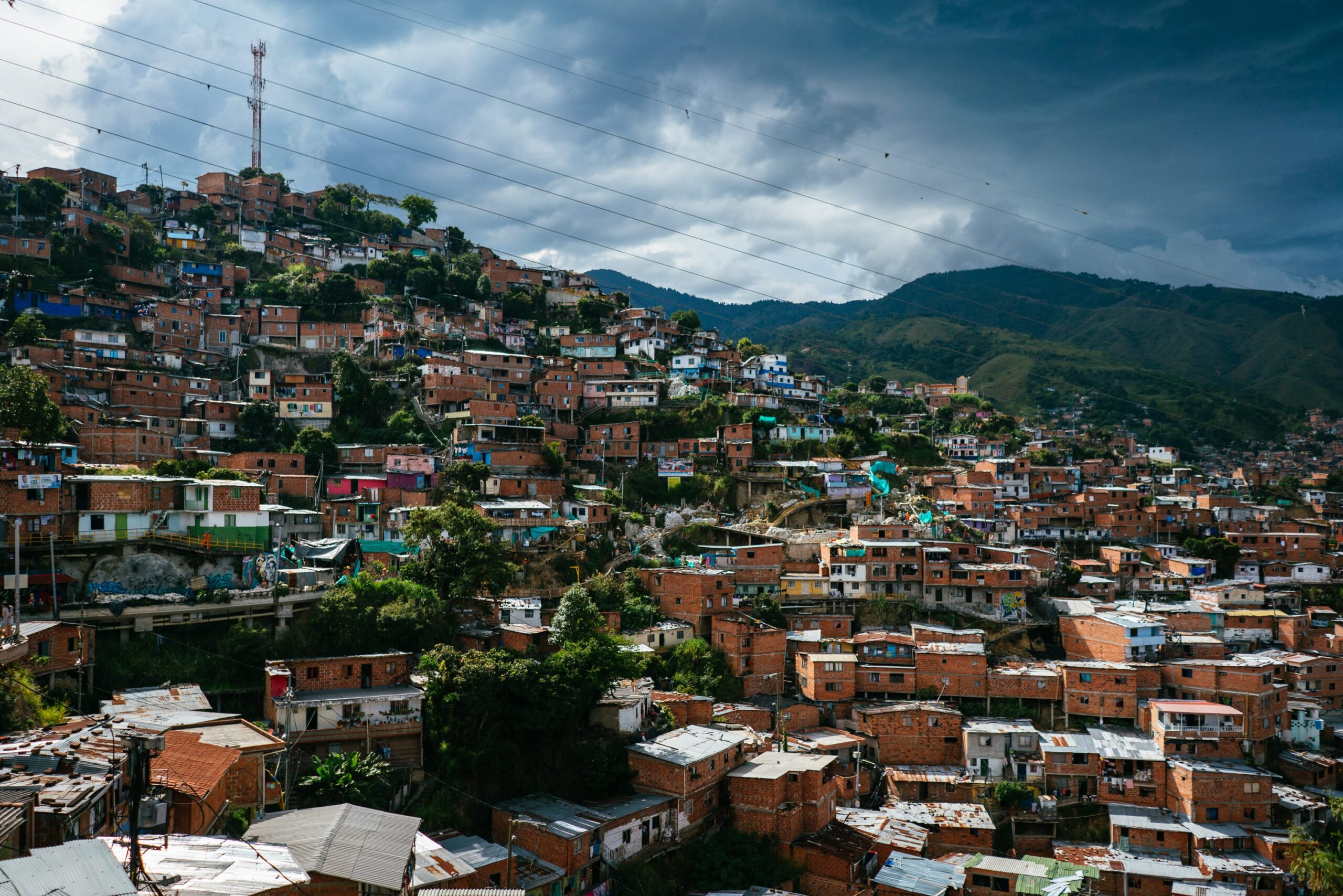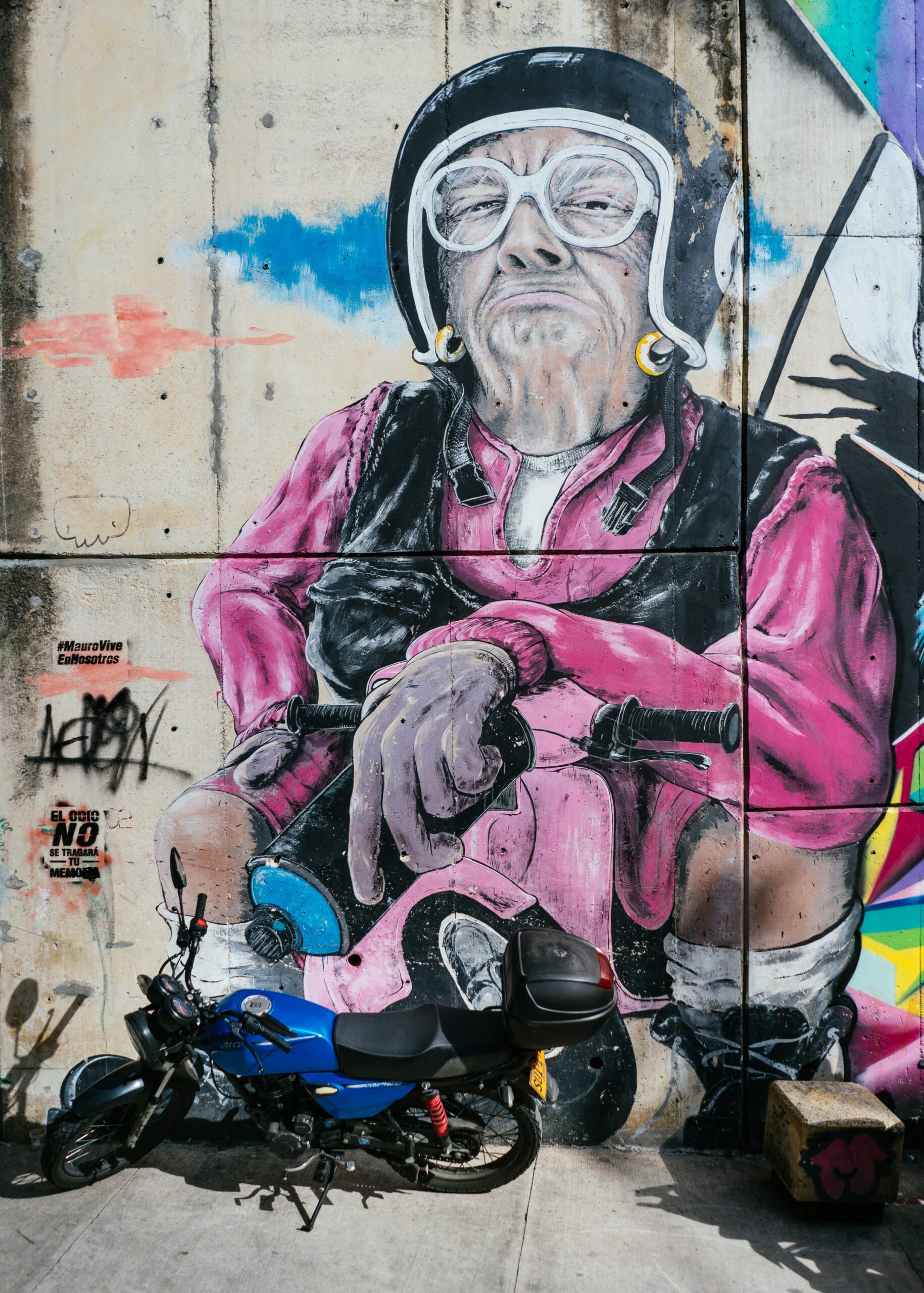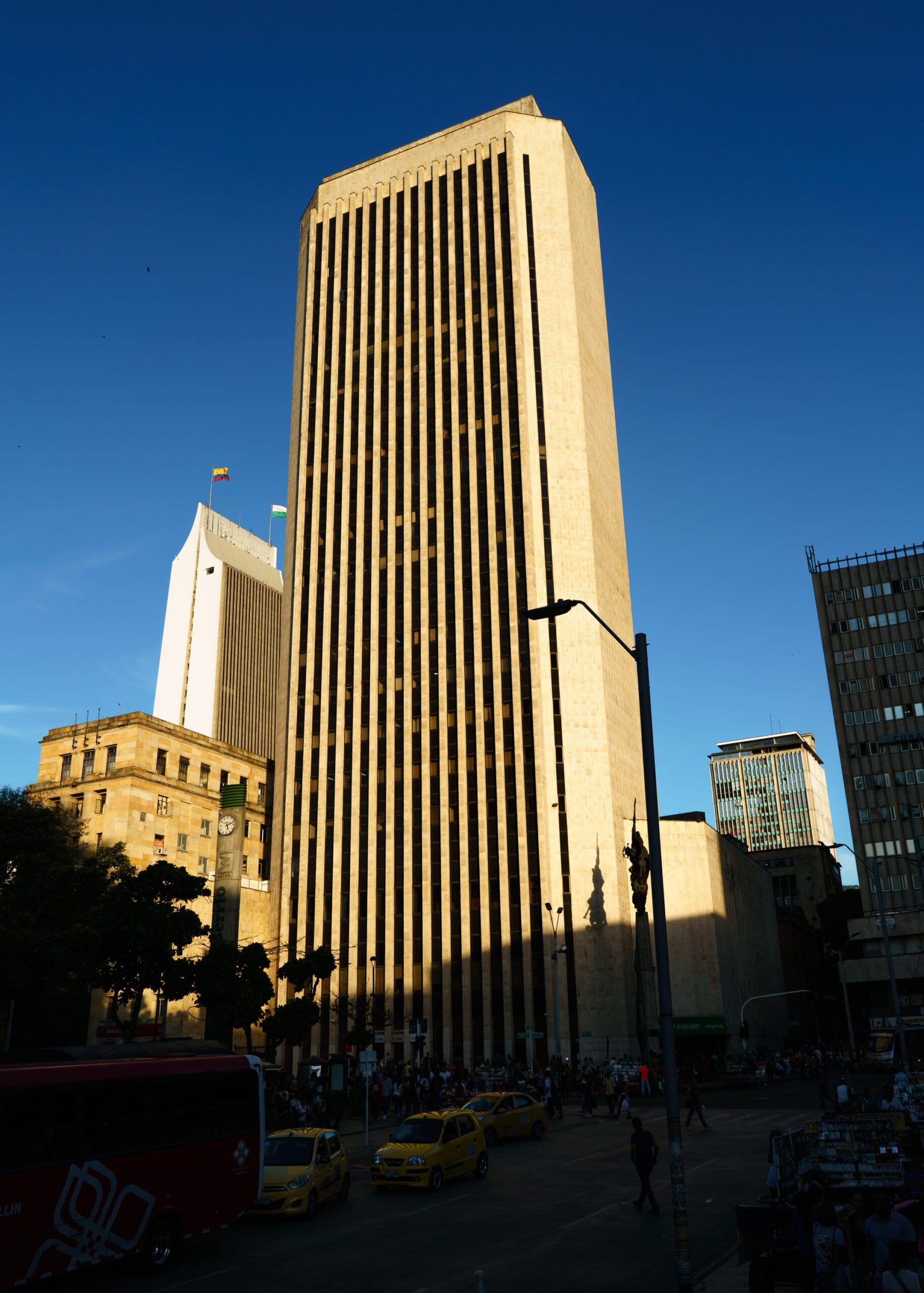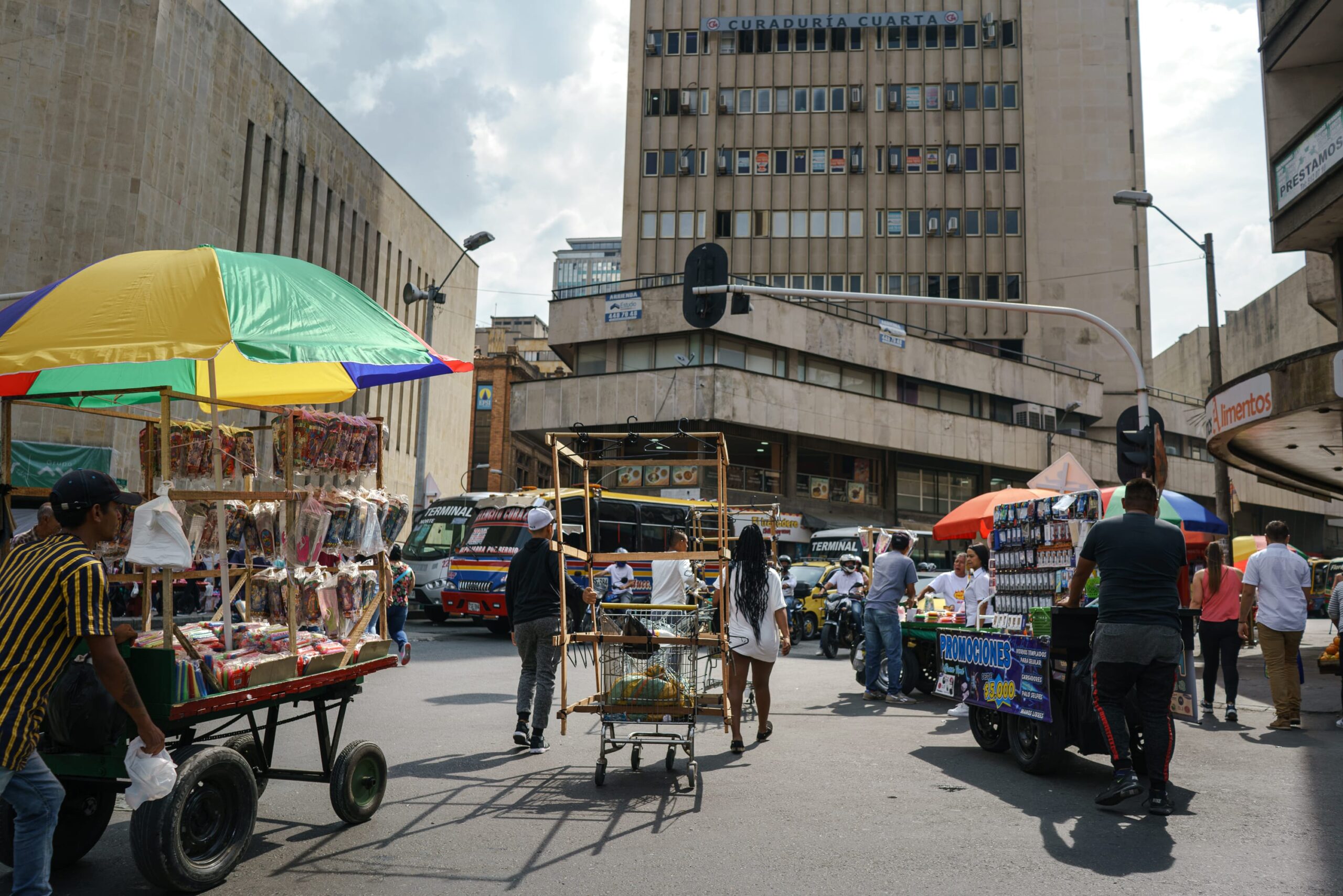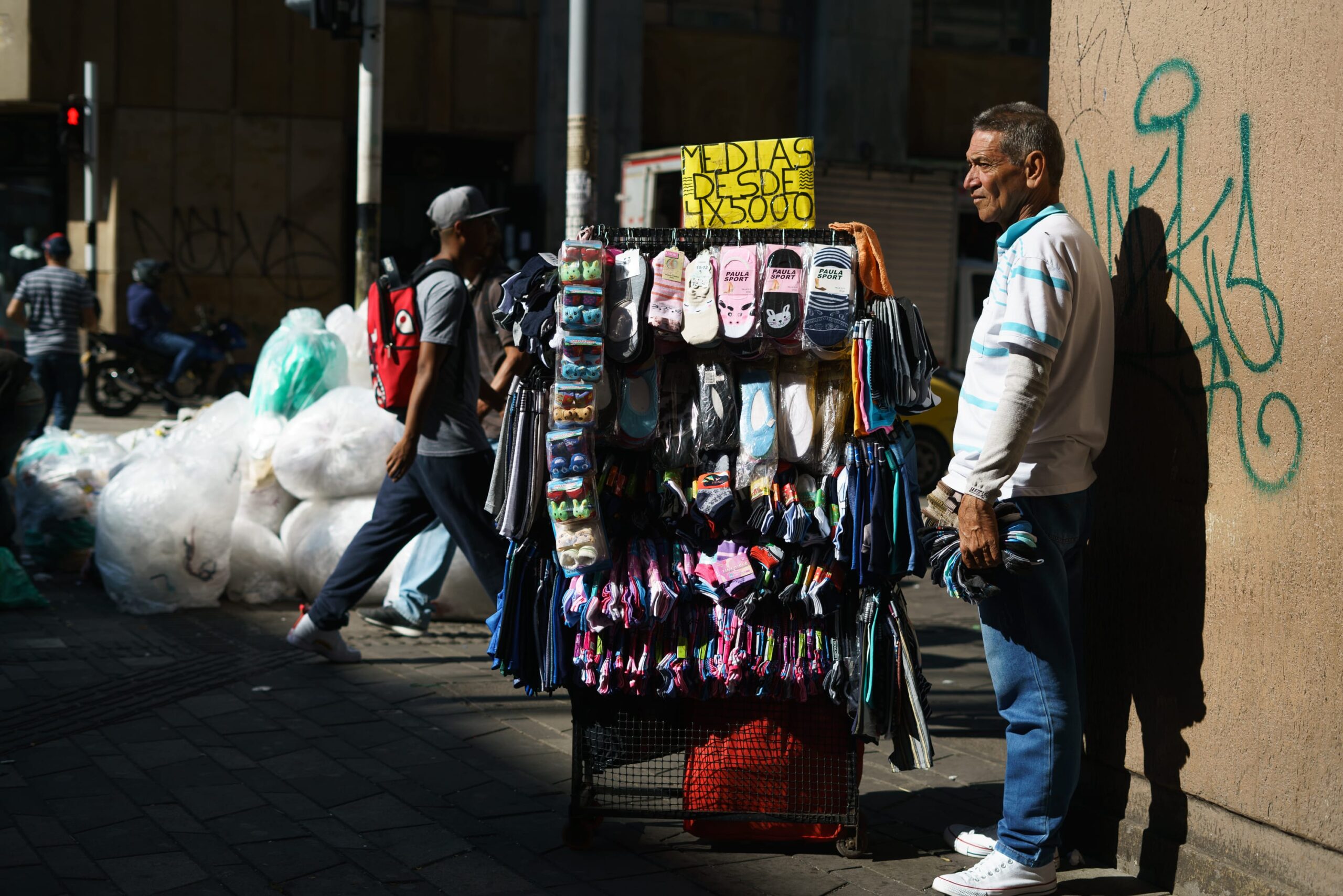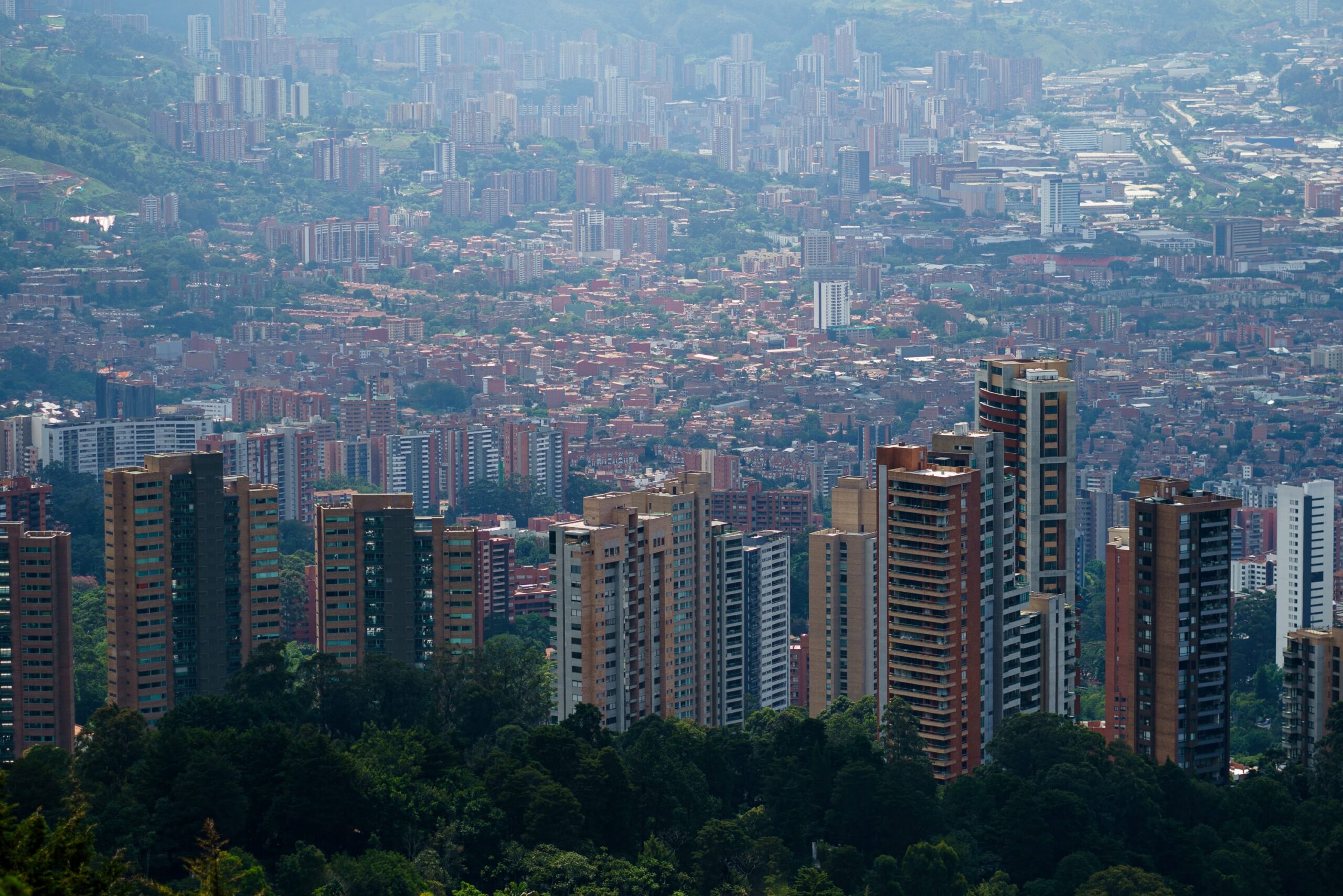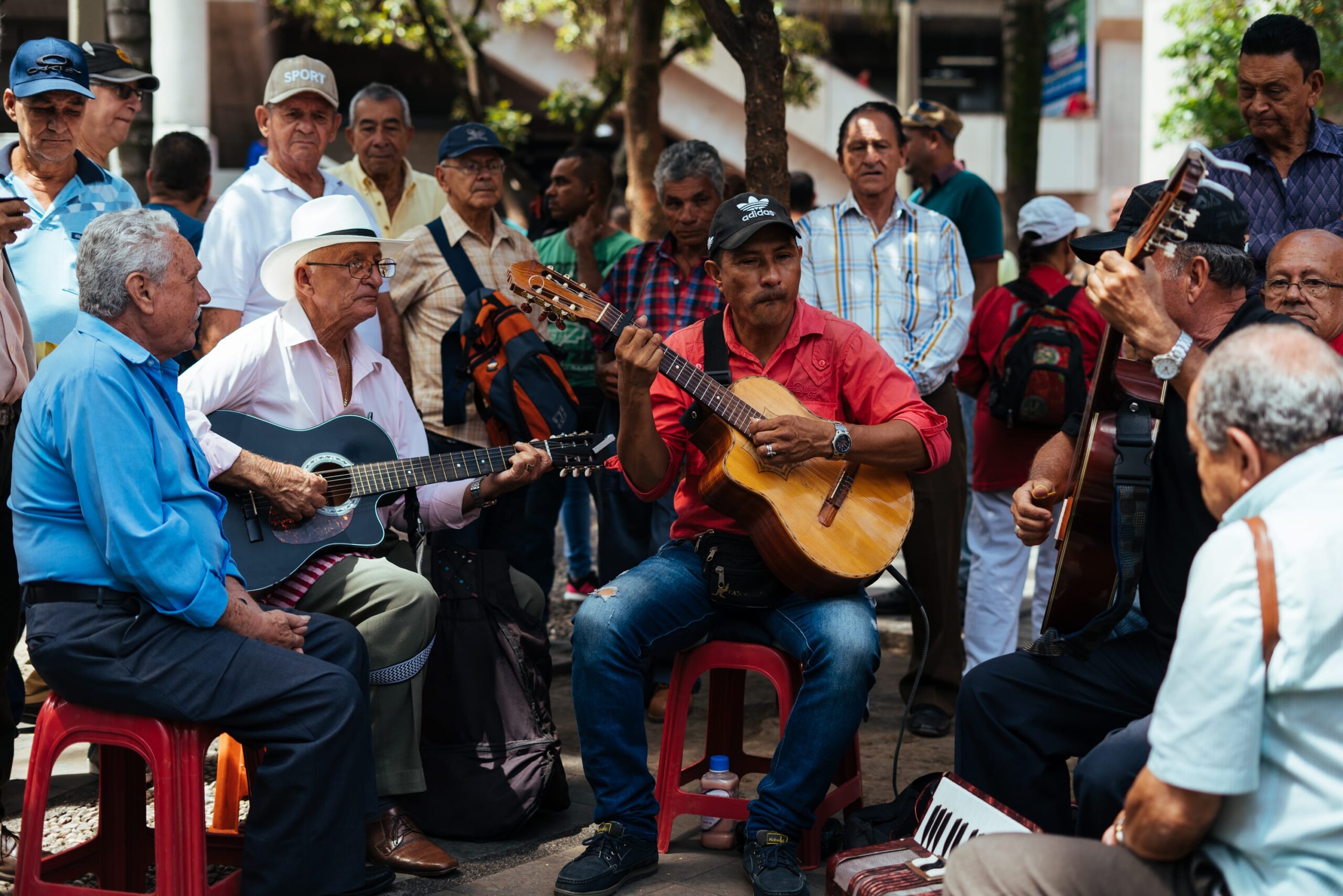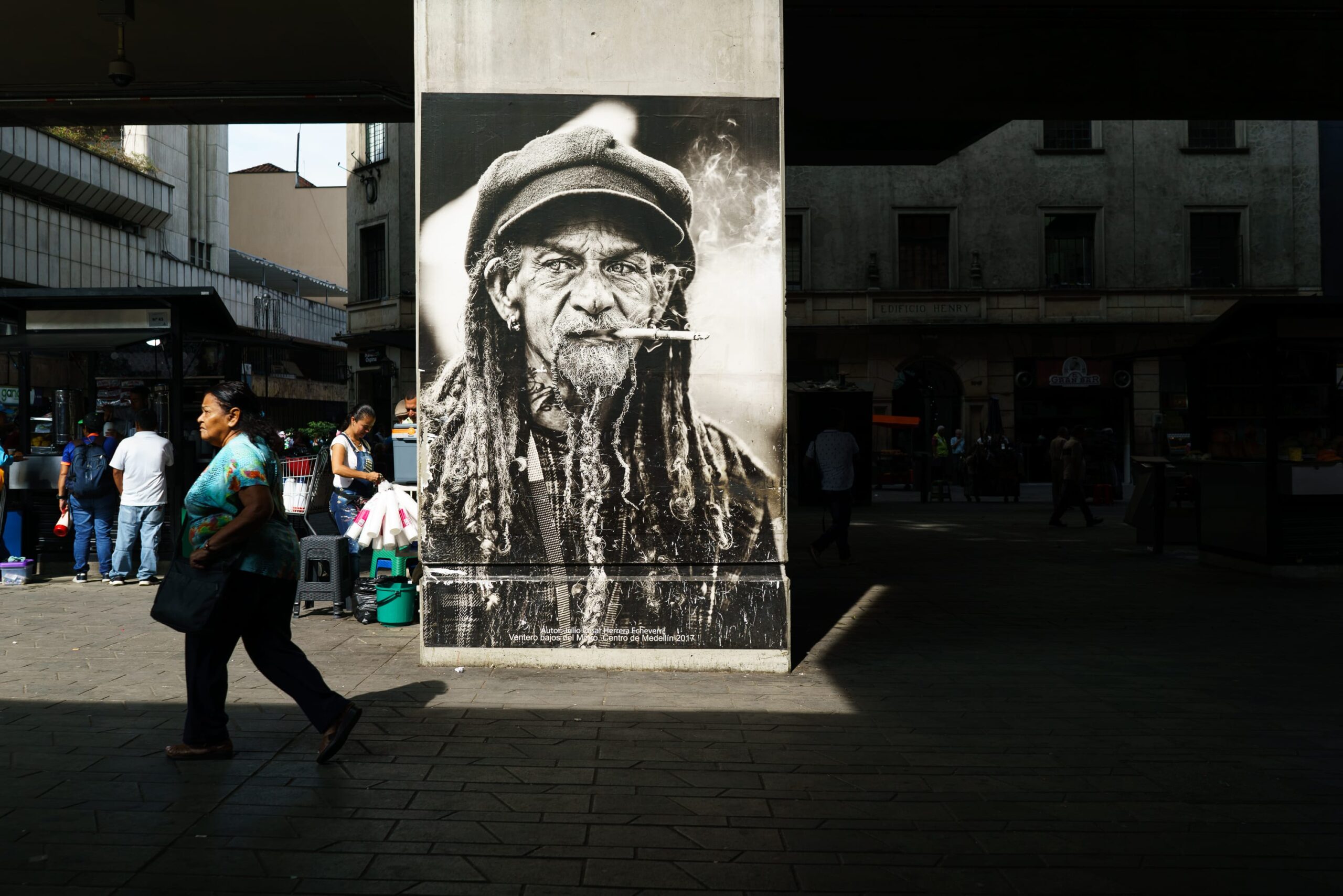Neighborhoods: Medellín Pt. II
I really enjoyed visiting the skate park beneath the bridge. It was a bustling hub, attracting skaters of all types. The park was thoughtfully designed, with a great layout, smooth surfaces, and it offered shelter from the frequent rains. It had challenging obstacles and great lines for skaters to explore.
Some non-skaters also frequented the park, mostly for less savory reasons, like buying or using drugs where there was less police presence. Some would sit and watch the skaters in action. The crowd was diverse, mostly spectators, but they showed respect for the skating culture. What made this skate park unique was the presence of vendors who set up small carts selling everything from food and drinks to electronics and headphones. There was even a guy responsible for keeping the park clean, relying on tips for his work.
I was surprised by the strong rollerblade community there, and I even made a few friends. However, I have to admit that I might have been a bit too preoccupied with other things to fully engage socially. My Spanish was still not great, and the local bladers used a lot of slang, making it hard for me to join their conversations without everyone having to slow down for me. Nevertheless, it was always great to be part of the skate community, skating together, hanging out, and sharing a smoke. Sometimes, words weren’t even necessary; it was a universal bond that transcended language barriers.
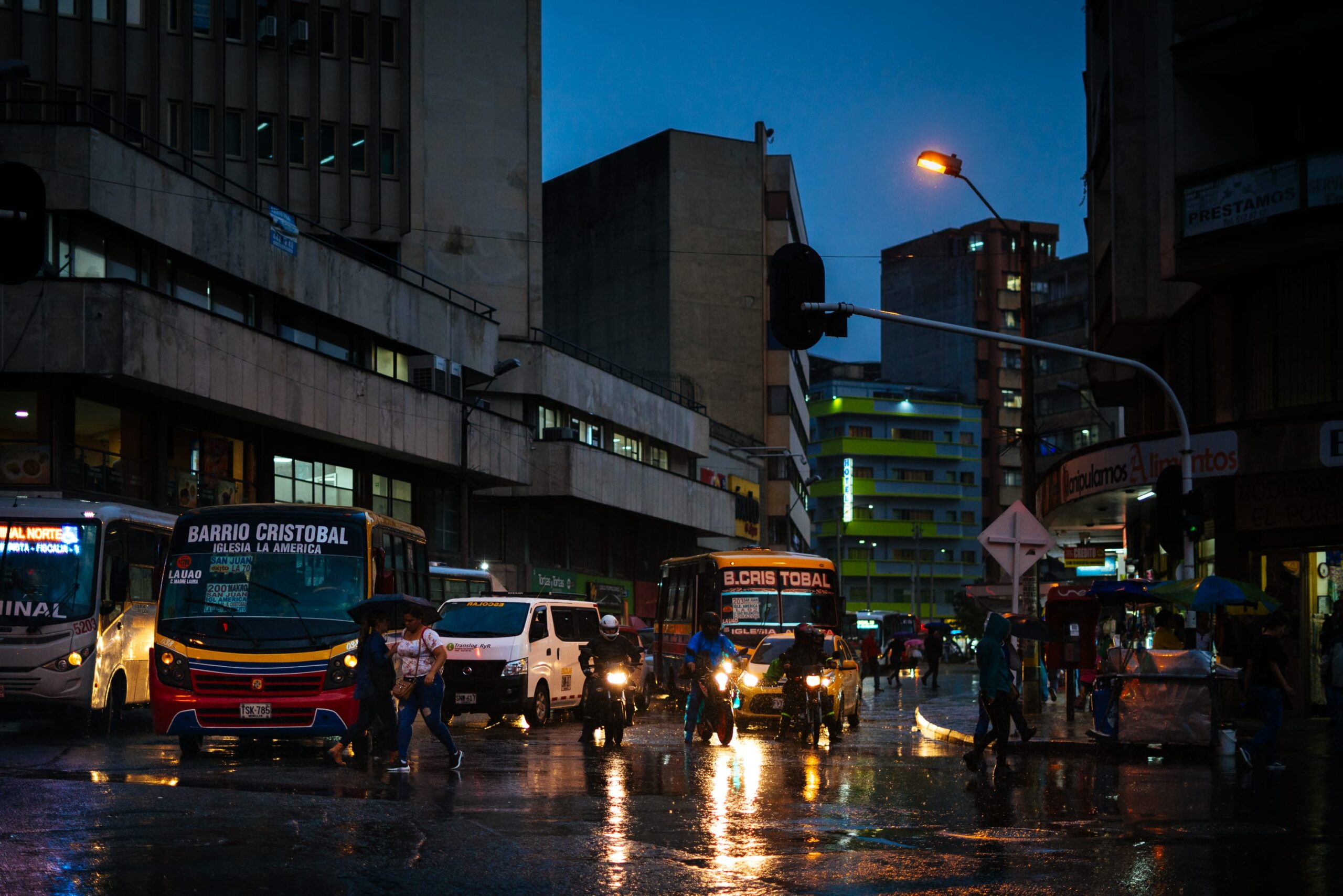
Around Parque Berrio, Medellín, Columbia
The park around one of the three most central metro stations was called “Parque Berrio”, it was also one of the nice bigger parks in the city centre connecting important parts of downtown. There was always police around so I considered it safe and it had so many photo opportunities in all directions.
Medellin had several good skate parks, and I managed to visit most of them. The one under the bridge was my favorite, but I also liked the street skate plaza in Envigado, the one up in the mountains (though it was a bit tricky to reach and in what felt like a sketchy neighborhood), and the one in front of my first house (not the best, but it was a skate park, after all). There were more that I saw but never had the chance to skate.
Getting around the city could be challenging, but the Moovit app was a lifesaver, providing clear bus routes to navigate the city. Without it, I would have been lost in a sea of buses going in every direction. Medellin could be intimidating for foreigners, especially when you had to disembark in unfamiliar neighborhoods to reach the skate park. I tried to travel light, carrying only the essentials – money for bus fare, a few joints, and maybe some drinks. I even invested in special sandals just for the skate park, though they weren’t much use elsewhere. Sadly, I couldn’t bring my camera; it was too risky without someone to watch over it. Figuring out the buses became a bit of a thrill, and the looks on the regular passengers’ faces when I confidently boarded were quite amusing. Tourists and expats preferred the metro or taxis, as the bus system was daunting for those on shorter stays. Rush hour on the metro was a nightmare, with long lines and crowded cars, especially in Poblado. Some of the buses followed the same route as the metro, running under the elevated tracks. Buses sometimes had to deal with traffic, but they were usually faster to the skate park than the metro, not to mention cheaper. They offered a more authentic city experience, passing through various neighborhoods, and there was always another bus just around the corner. The buses were privately operated but part of a larger system with designated routes and numbers, complete with drivers and fare collectors.

Transporter I, Medellín, Columbia
The business district around Medellins shopping centre called “El Hueco” is one of the busiest I’ve ever seen, maybe I’d consider Bangkok more lively. It worked as the traditional shopping district of the city, with every item (on the south American market) imageable available. Many stores selling similar items could be found on the same block and so creating some sort of unofficial mall or centre for people who look for certain kinds of products.
I hopped between different neighborhoods in the city, opting for Airbnb accommodations. I decided to stay away from Poblado, which was mostly populated by expats and wealthy individuals. Instead, I explored other areas and settled around La Bonbona, the bustling downtown heart of the city. It could be a bit sketchy at night, but since I was mostly active during the day, it didn’t bother me.
The shopping district, known as El Hueco, lay just below La Bonbona. It was a labyrinth of small shops squeezed into regular buildings along the metro line. Some were nicer than others, but none were particularly fancy. Locals frequented this area for their shopping needs, and it was divided into sections with different themes – fashion, shoes, household items, and more. Despite the vast number of shops, most offered similar items from around 200 different vendors.
I didn’t need much, given my minimalist lifestyle, but I did pick up two pairs of shoes and some track pants for skating. It’s worth noting that all the items here were knockoffs, cheaper but of lower quality than the originals. Malls with authentic products could be found in Poblado and Envigado. I bought a pair of Adidas Spezials and a pair of New Balances, the latter not even existing as an authentic product. They were priced at about 35-40% of the retail price of genuine products, not exactly cheap. Negotiating wasn’t really a thing; locals paid the advertised prices. The quality turned out to be subpar, from the materials used for the upper to the foam and rubber on the soles. I walked a lot, and these shoes, while they looked nice in the store, didn’t hold up well. Lesson learned.
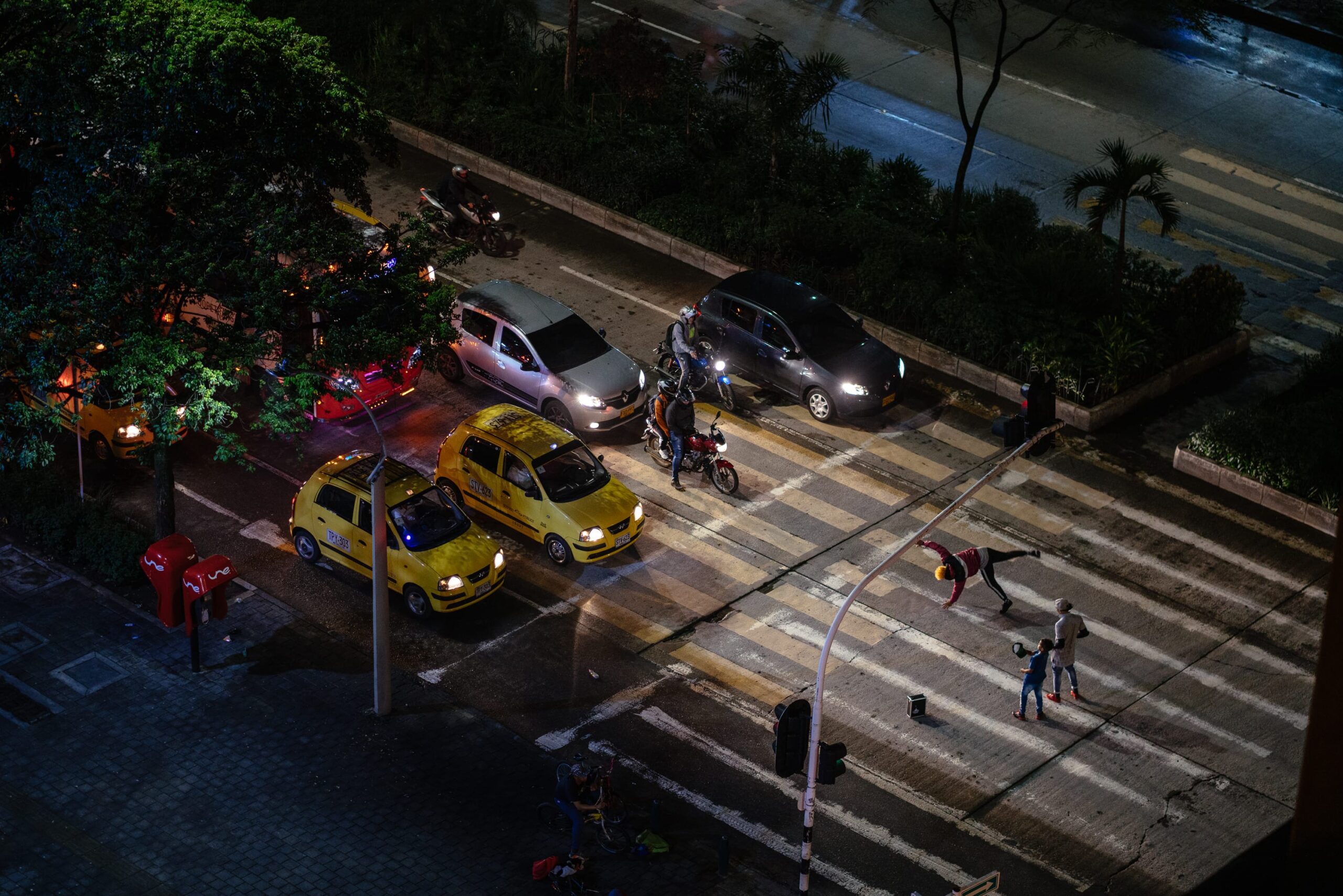
Hustlers I, Medellin, Columbia
These kids were earning their meals by breakdancing in front of the traffic during the red light phase. I stayed at the “Grand Central Medellín” hotel for a couple of nights because i couldn’t find an Airbnb. I enjoyed the charm of brutalist 70’s hotel architecture served with continental breakfast on the coffee deck. The hotel had seen better days but nonetheless it was a cool experience.

Hustlers II, Medellin, Columbia
The kids in the above photo actually did something skilful to earn their money, whilst these just worked in the modelling business. A pretty clever business model, they ask you to take a photo and once you’ve agreed and setup the shot they start to ask for money. Luckily Columbian models are still cheap so I could pay the fee they were asking.
I hopped between different neighborhoods in the city, opting for Airbnb accommodations. I decided to stay away from Poblado, which was mostly populated by expats and wealthy individuals. Instead, I explored other areas and settled around La Bonbona, the bustling downtown heart of the city. It could be a bit sketchy at night, but since I was mostly active during the day, it didn’t bother me.
The shopping district, known as El Hueco, lay just below La Bonbona. It was a labyrinth of small shops squeezed into regular buildings along the metro line. Some were nicer than others, but none were particularly fancy. Locals frequented this area for their shopping needs, and it was divided into sections with different themes – fashion, shoes, household items, and more. Despite the vast number of shops, most offered similar items from around 200 different vendors.
I didn’t need much, given my minimalist lifestyle, but I did pick up two pairs of shoes and some track pants for skating. It’s worth noting that all the items here were knockoffs, cheaper but of lower quality than the originals. Malls with authentic products could be found in Poblado and Envigado. I bought a pair of Adidas Spezials and a pair of New Balances, the latter not even existing as an authentic product. They were priced at about 35-40% of the retail price of genuine products, not exactly cheap. Negotiating wasn’t really a thing; locals paid the advertised prices. The quality turned out to be subpar, from the materials used for the upper to the foam and rubber on the soles. I walked a lot, and these shoes, while they looked nice in the store, didn’t hold up well. Lesson learned.
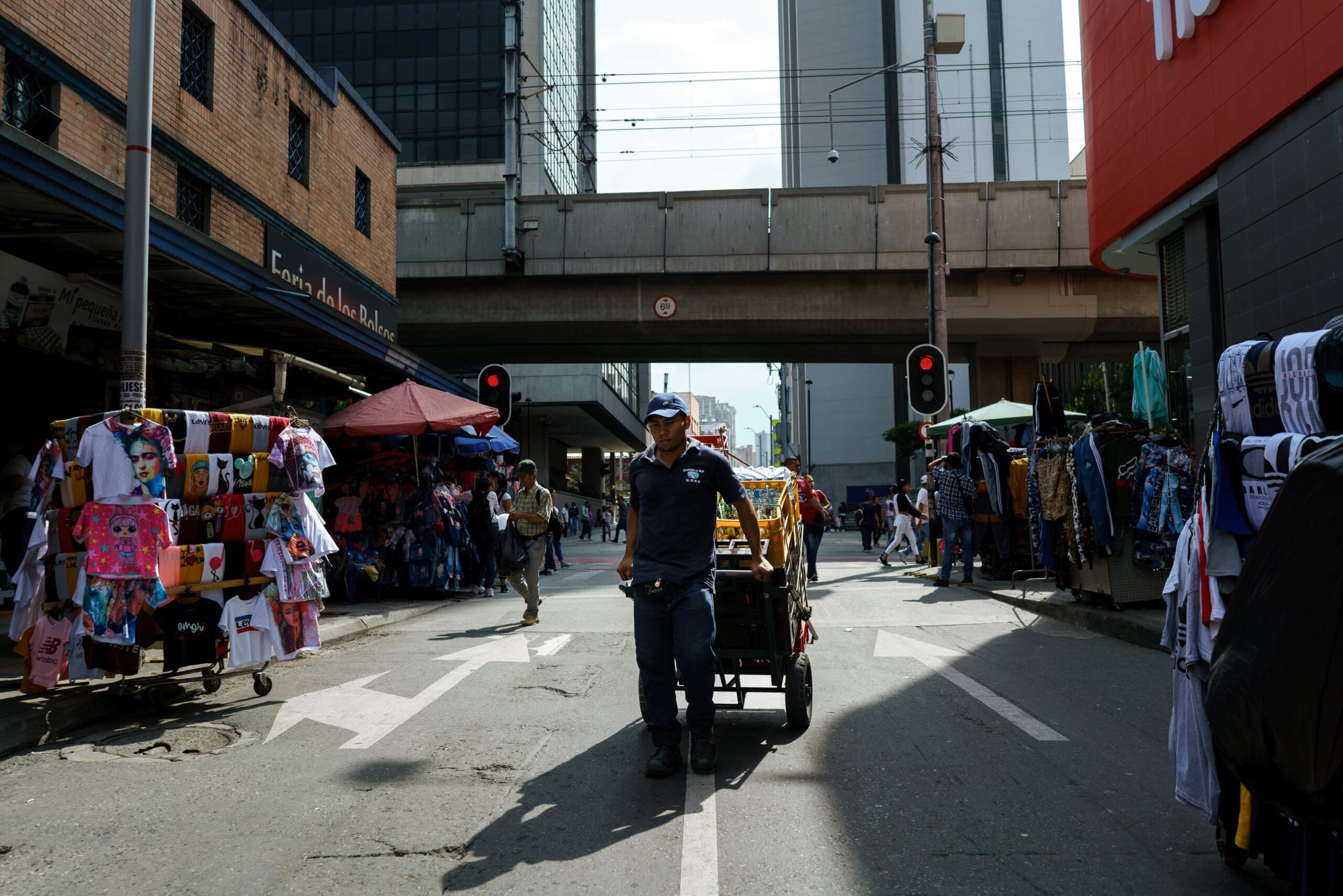
Transporter II, Medellín, Columbia
There are so many things bought and sold in the shopping district every day its crazy. All the stuff needs to be moved, be it from storage to the store or to the clients vehicle or even house. For this reason there are countless people with carts working as transporters. Some can be hired just off the street while others only work for certain businesses.
